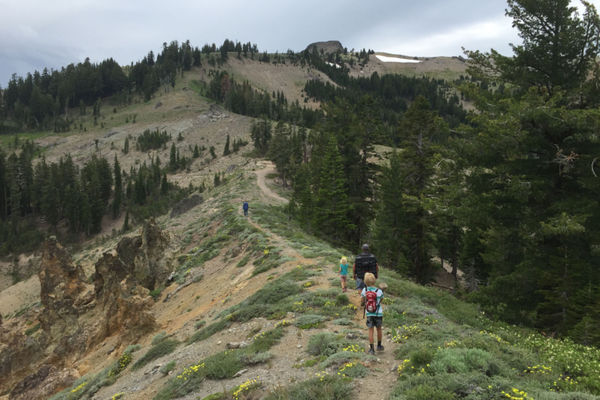Go hiking in nature
Go on a short nature hike to observe plants, animals, and rocks; practice map reading, safety, and recording discoveries in a simple field journal.



Step-by-step guide to go on a short nature hike
How Do Hiking Trails Help Kids Identify Unique Flora And Fauna? - The Hiker's Advice
Step 1
Put all your materials into your backpack so you are ready for the hike!
Step 2
Put on your sturdy shoes before you leave.
Step 3
With your adult, look at the trail map and pick a short trail to explore.
Step 4
Tell a grown-up where you're going and when you'll come back.
Step 5
Put your water bottle and snack into your backpack.
Step 6
Put your notebook and pencil and compass into your backpack.
Step 7
Walk with your adult to the trailhead.
Step 8
Begin walking on the trail.
Step 9
Stay close to your adult while you walk.
Step 10
Look around carefully for plants animals and rocks as you go.
Step 11
Choose one thing you find to study closely.
Step 12
Draw or write one quick note or sketch about your find in your field journal.
Step 13
Use your compass to find north and turn your map so the map's north points the same way.
Step 14
Walk back to the trailhead with your adult when your hike is finished.
Step 15
Share your finished field journal and discoveries on DIY.org.
Final steps
You're almost there! Complete all the steps, bring your creation to life, post it, and conquer the challenge!


Help!?
What can we use instead of a compass or a field notebook if we don't have them?
If you don't have a compass, use a smartphone compass app or the sun-and-watch method to find north and turn your map as the instructions say, and if you lack a field journal use a spiral notebook or loose paper and a pencil tucked into your backpack to sketch your find.
What should we do if we can't match the map to the trail or feel unsure where to go?
If you can't match the map to the trail, stop, stay close to your adult, use the 'Use your compass to find north and turn your map' step to align the map, then retrace your steps back toward the trailhead and tell a grown-up where you're going and when you'll come back.
How can I change the hike activity for younger kids or older kids?
For toddlers shorten the walk and make 'choose one thing to study' a supervised leaf tracing in the field journal, for school-age kids keep the notebook, pencil and compass practice, and for teens pick a longer trail and a more detailed field journal to upload to DIY.org.
How can we extend or personalize the hike and field journal activity?
Extend the activity by creating a checklist of local plants and animals to look for, pressing a specimen in your notebook, adding photos and compass bearings to your sketches, and sharing the finished field journal and discoveries on DIY.org.
Watch videos on how to go on a short nature hike
Can Kids Learn To Identify Nature On Different Hiking Trails? - The Hiker's Advice
Facts about outdoor skills and nature study for kids
🥾 Humans have been hiking trails for thousands of years — it's one of the oldest ways people explore the world!
📔 Naturalists like Charles Darwin kept field journals full of neat observations that led to big discoveries.
🧭 Orienteering started as military training in Scandinavia and grew into an organized sport in the early 1900s.
🌿 Scientists know about roughly 390,000 plant species — there's a whole world of plants to spot on a short hike!
🪨 Sedimentary rocks often hold fossils, while igneous rocks form when lava or magma cools — rocks are Earth's storybook.
How do I lead a short nature hike with my child to observe plants, animals, and rocks while practicing map reading and safety?
What materials do I need for a short nature hike and a simple field journal?
What ages is a short nature hike with map reading and a field journal suitable for?
What safety tips should parents follow on a short nature hike with children?


One subscription, many ways to play and learn.
Only $6.99 after trial. No credit card required



